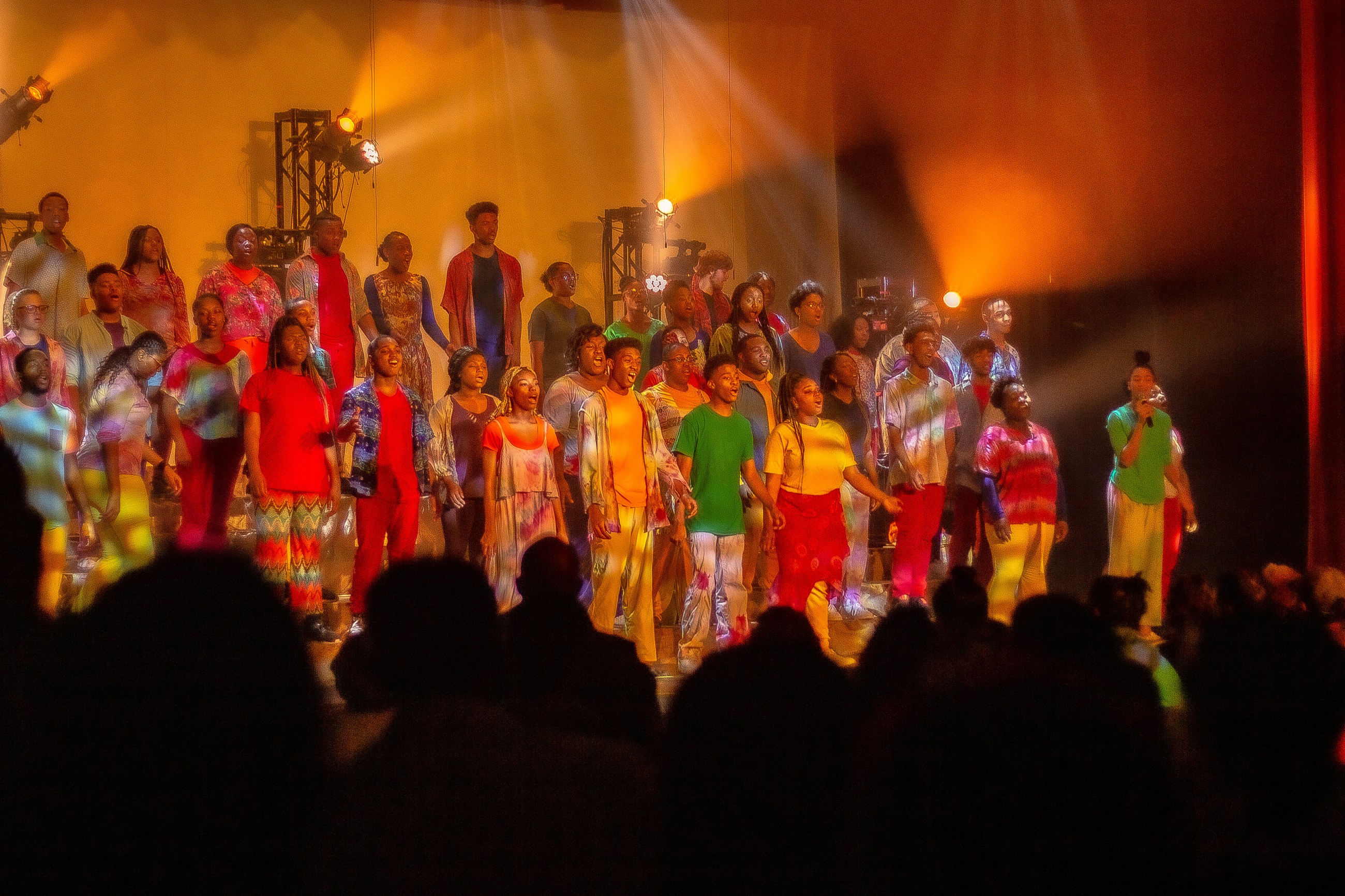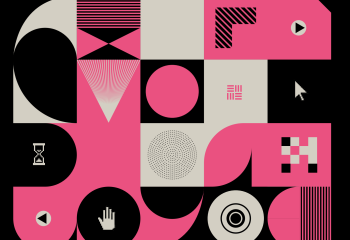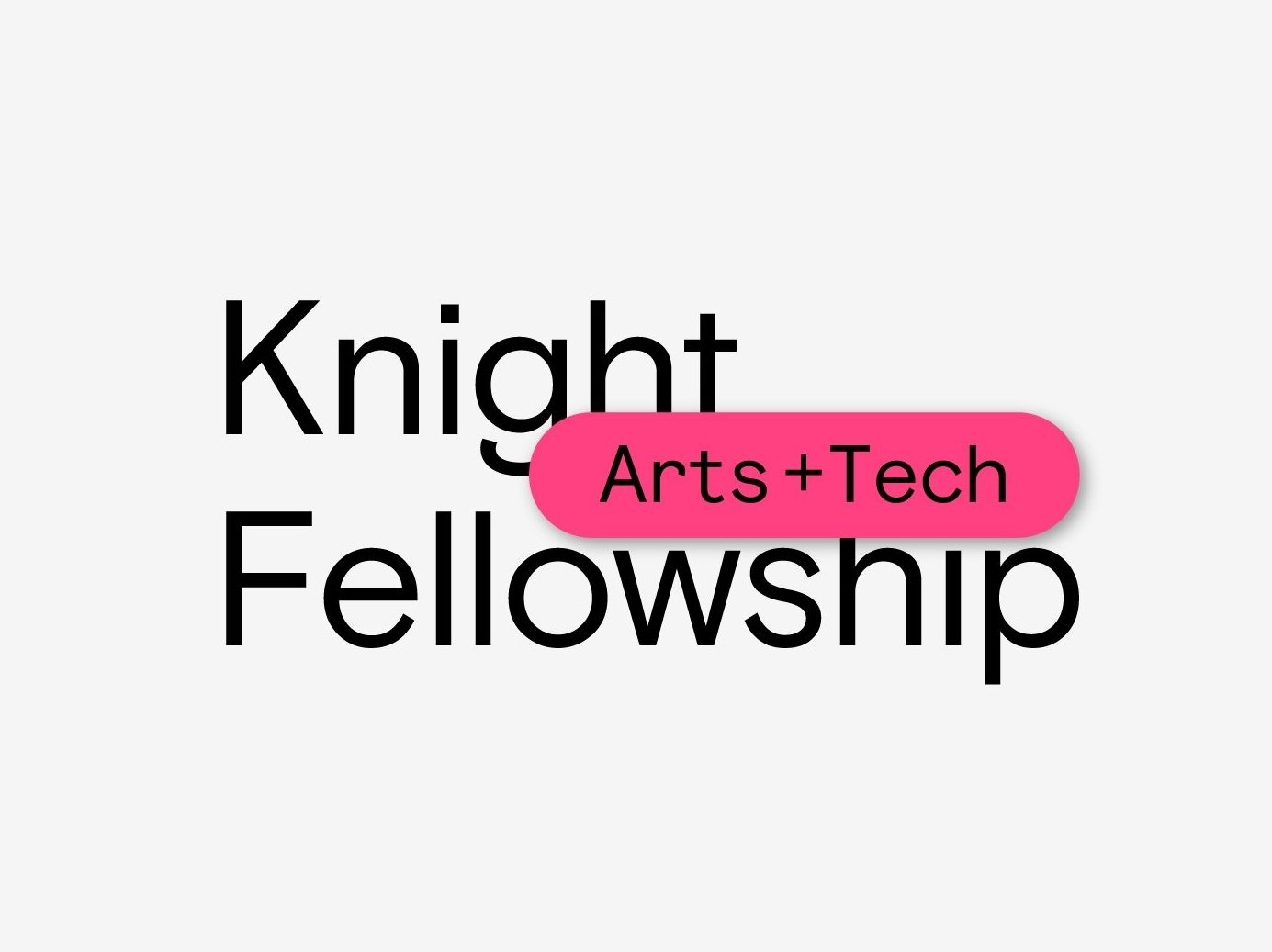FOREWORD
Priya Sircar, Director/Arts, Knight Foundation
In the year since the COVID-19 pandemic took hold, “pivot” has been the word of the day—every day. The word has become so (over)used that it has begun to lose its meaning. What does it really mean to “pivot” successfully? To what, and how?
For many arts and culture organizations, choosing a new direction felt a bit scattershot, as if they were trying anything and everything just to keep functioning, earning income and keeping artists employed. Certainly, organizations of all types found themselves suddenly changing plans . . . some nimbly, some not. But amid evolving public health protocols and uncertainty about how long such conditions would last, decision making was understandably difficult.
As a supporter of arts organizations, we have been engaging with grantees in our communities throughout the pandemic. We’ve often asked: How are organizations figuring out which direction to go in? And have certain skills or traits helped them to weather the storm?
Organizations in Detroit and Philadelphia entered the pandemic fresh off of a training program in adaptive capacity, provided by EmcArts and supported by Knight Foundation in partnership with the Community Foundation of Southeast Michigan (in Detroit). To understand the short- and medium-term impacts of the four-month training program, Knight enlisted WolfBrown to conduct a study with participants in each cohort. While we do not yet know the long-term effects of the training, this initial follow-up gave us some insight into how the training was impacting the organizations. For some, the pandemic accelerated the application of what they had learned. Some were still internalizing the concepts and tools they had gained, while others found ways to use newfound skills to identify a way forward. In some cases, additional guidance beyond the introductory training would have been helpful, especially given the severity of the conditions in which organizations have been trying to apply the new information. Clearly, the ability to adapt is a critical skill for organizations, now more than ever.
For many of us, this last year has been a crucible in which we have been tested, have clarified our purpose and, in some ways, come through stronger. These organizations also tested, honed and applied the lessons of their training, in ways both conscious and unconscious. Here we share a few of their stories that have inspired us and helped us understand how we might not just pivot, but also adapt intentionally and effectively to an ever-changing and unpredictable world. We hope they might do the same for you.
INTRODUCTION
There perhaps has never been a time when it has been more critical for organizations to have the capacity to adapt in order to survive. In March 2020, when the rapid spread of COVID-19 resulted in stay-at-home orders in cities across America, arts and culture organizations, dependent on in-person programming and live audiences for revenue, experienced collective shock. Notably, however, it wasn’t long before they took action.
What brings an arts organization into existence in the first place is a group of people who share the inherent desire to work together to create, produce and present work that comes from the imagination. In March, when their raison d’être was met with the extremely disruptive challenges imposed by the unanticipated, multifaceted crisis of the COVID-19 pandemic, they were able to draw on that inherent drive to create in order to survive. Arts leaders and managers are resilient, but when confronted with COVID-19, even the most adaptive likely needed to draw on resources they may not have known they had.
Coincidentally, just several months earlier, in fall 2019, 26 arts organizations based in Detroit and Philadelphia took part in adaptive capacity training through the Knight Foundation’s initiative Building the Capacity to Innovate and Adapt. The six half-day workshops developed and facilitated by EmcArts were designed to help the organizations learn how to work together to address their most complex challenges. Part leadership training and part collaborative, experiential learning, the program encouraged out-of-the-box thinking and the letting go of assumptions that can lock organizations into behaviors that no longer provide the productive outcomes they seek.
The workshops were designed to enable participants to identify the type of decision-making challenge they are facing and respond accordingly. Participants learned that different levels of complexity require different tools. For example, a complex challenge is one without a simple, best practice solution. A complex challenge requires probing or experimentation to explore multiple possibilities that may lead to a new and innovative response or the adaptation of an old approach for a new situation. Thousands of organizations faced this type of challenge when cities and communities shut down early last spring.
Participating organizations were asked at the outset of their training to identify a “wicked question” to address during the workshop. A wicked question contains a central paradox –– two seemingly contradictory goals that both need to be addressed in order to move forward. Stating that paradox explicitly can unlock solution-oriented thinking. For example: “How do we present in-person work when we cannot gather in person?” One of the ways participants were taught to explore possible responses to such questions is through the use of Small Experiments with Radical Intent (SERI). These experiments are designed to be inexpensive and unassuming, in order to test ideas without fear of failure. Whether framing them explicitly as SERIs or not, arts and cultural institutions that have spent the last year conducting experiments to address the challenges of the pandemic have developed some of the most imaginative responses, which have enabled them to become more resilient through the process of innovation and adaptation.
Last March, when it was clear the virus was reaching pandemic status, those who participated in the adaptive capacity initiative quickly drew on what they had learned. The following are stories from four of the organizations detailing the lessons each applied to address the unanticipated disruptions related to COVID-19. Philadelphia’s Bearded Ladies Cabaret Company and RAIR (Recycled Artist in Residency) tackled a complex challenge and challenging assumptions, respectively. From the Detroit cohort, Mosaic Youth Theatre of Detroit used small experiments to address complex challenges, while Planet Ant posed a wicked question that led them to reframe how they think about their mission.
BEARDED LADIES
The Beardmobile Aids a Complex Challenge

For an organization like the Bearded Ladies Cabaret Company, questioning norms, engaging in experimentation and taking risks are behaviors inherent to their development of creative, performative work. But using these concepts to make changes within the organization was something they hadn’t considered until they participated in the Knight Foundation’s adaptive capacity initiative.
The Bearded Ladies are a self-described “experimental cabaret group devoted to exploiting all the possibilities of intimate, homemade theatre through beautiful songs, tricked-out costume changes, drag, and virtuosic prop construction.” Founded by Artistic Director John Jarboe, their work examines the politics of popular culture, sex, gender and artistic invention. Participants from the Bearded Ladies left the workshops with a keen desire to rethink how they connect with their artist community and with Philadelphia neighborhood residents who might not typically engage with them as audience members.
When the spread of COVID-19 began, the Bearded Ladies were on tour in New Zealand. They immediately returned to the United States and, like many organizations, canceled all plans for in-person activities and stepped up their online content and virtual programming. The isolation, however, worked against their post-workshop efforts to increase outreach, and they found themselves with the very complex challenge of strengthening in-person engagement with the community while complying with COVID-19 social distancing protocols.
Because of their adaptive capacity training, they knew that to address a complex challenge –– one in which there can be any number of responses –– it is important to begin by identifying and answering one central question. From there, the processes of examining assumptions, testing ideas and leaning into risk become tools for exploring possible solutions.
As is often true of the creative process, the limitations imposed by the pandemic accelerated their motivation to find a way to connect in a more tangible way than digital strategies can provide. Once resettled at home, and with the newness of experimentation with virtual programming waning, Jarboe looked for a way to meet the challenge of engaging with the community offline. Inspired by the New York Philharmonic’s NY Phil Bandwagon pop-up concert series and, with help from a generous donor, the Bearded Ladies purchased a 15-foot box truck that could be outfitted as a mobile theater for community performances. They named it the Beardmobile.
Meanwhile, the Bearded Ladies continued to work on their complex challenge of exploring ways to connect with those outside their own circles as demonstrations calling for racial justice and voter protections were taking place throughout Philadelphia. While talking with community associations and neighborhood groups to get a sense of the various ways to use the Beardmobile, they were approached by several collectives organizing Count Every Vote demonstrations. The groups thought the truck could be helpful during protest marches on crowded city streets. The Beardmobile became a protective shield leading the marches through the streets, while also providing a means for the amplification of speeches and a platform from which to speak.
The organization now sees the truck as an “asset with enormous potential” for themselves as well as for the community partners with whom they want to engage more deeply. Together, they are experimenting with different ways to use the truck to bring people together safely, provide services such as food delivery to those who are in quarantine and other forms of mutual aid. Today, the Bearded Ladies’ complex challenge has evolved from how to better engage with the community to how the Beardmobile can be used to respond to others’ complex challenges.
John JarboeWhat is worth going outside your house? What is worth doing? That’s a question we’ve been asking a lot over these past months.
RAIR
Swapping Old Assumptions for New Ideas Leads to Success

When RAIR (Recycled Artist in Residency) Co-Founder Billy Blaise Dufala and Director of Special Projects Lucia Thomé applied for the Knight Foundation’s adaptive capacity initiative, they were hoping to learn how to create greater institutional sustainability by making more effective use of their existing resources. Through the training program, they found that, in order to do that, they had to challenge their assumptions about how to make use of what they already have.
Co-founded in 2010 by Dufala and Fern Gookin, RAIR is part of a creative movement that explores and celebrates the artistic potential in urban waste flows and, more recently, remediated toxic land sites. They are part arts organization, part ecological research team and part sustainability advocate, dedicated to understanding what the integration of creativity, sustainability and reclamation tells us about ourselves and society. Their flagship Residency Program at the Revolution Recovery site allows artists to think of the construction and demolition waste site as their studio. For example, a recent RAIR resident, artist Carrie Mae Smith, built a boat out of salvaged material and rowed it on the Delaware River.
Dufala and Thomé had already started a strategic planning process after their adaptive capacity training when COVID-19 closed their operation. They used their newfound time to think deeply about RAIR. Adaptive leadership encourages people to question established ideologies, norms and assumptions. By employing methods they learned through EmcArts, they were able to structure their conversations to get the most out of their planning efforts. One activity in particular helped them identify and examine the “this is how we’ve always done it” organizational norms that had taken root and were keeping them from thinking more freely about their future.
Stay-at-home orders continued into the fall months that Dufala and Thomé would usually spend planning their signature fundraising event, the Trash Bash. In 2020, however, the event was clearly at risk of cancellation. Because the event had been consistently successful, the idea of doing something different was hard to imagine. They decided that the only way to reconceive it was to look beyond the assumptions they had about what a fundraiser should be and, more specifically, how the Trash Bash should look. “We had a really well-received and adored annual fundraiser with a six-year tradition that we were terrified of messing with because it worked really well every year,” Dufala and Thomé said. “This year we had to reinvent it, and in doing so, it opened up so many more exciting possibilities for our creative process. Maybe it’s an anomaly because of COVID-19, but we ended up doing better at raising funds than any prior year.”
The result was a livestreamed Zoom event at the Revolution Recovery site with Dufala as the emcee (in a hard hat). Attendees could purchase a mystery box in advance that held a variety of party items, as well as the ingredients and recipe for a champagne cocktail. There was a celebratory toast and an online auction to replace their customary silent auction of artworks by local artists. The RAIR team maximized the use of their existing resources by changing their relationship to them. By staging part of the event in their onsite office and using a pile of recycled materials as their backdrop, they took attendees to the heart of RAIR.
To achieve institutional sustainability, leadership must constantly reassess its norms and practices to ensure they are continuing to serve the organization’s mission. By asking the questions “Why do we do it this way?” and “Is it still working for us?,” leaders like Dufala and Thomé can open their imaginations to what else is possible.
Billy Blaise DufalaWe are taking stock of what we have available and making the best use of it while resisting the urge to make decisions based on old assumptions. It’s like mining a landfill of cast-off materials for creative inspiration that leads to reclamation and the birth of something entirely new.
MOSAIC YOUTH THEATRE OF DETROIT
Creativity Unleashed by Small Experiments
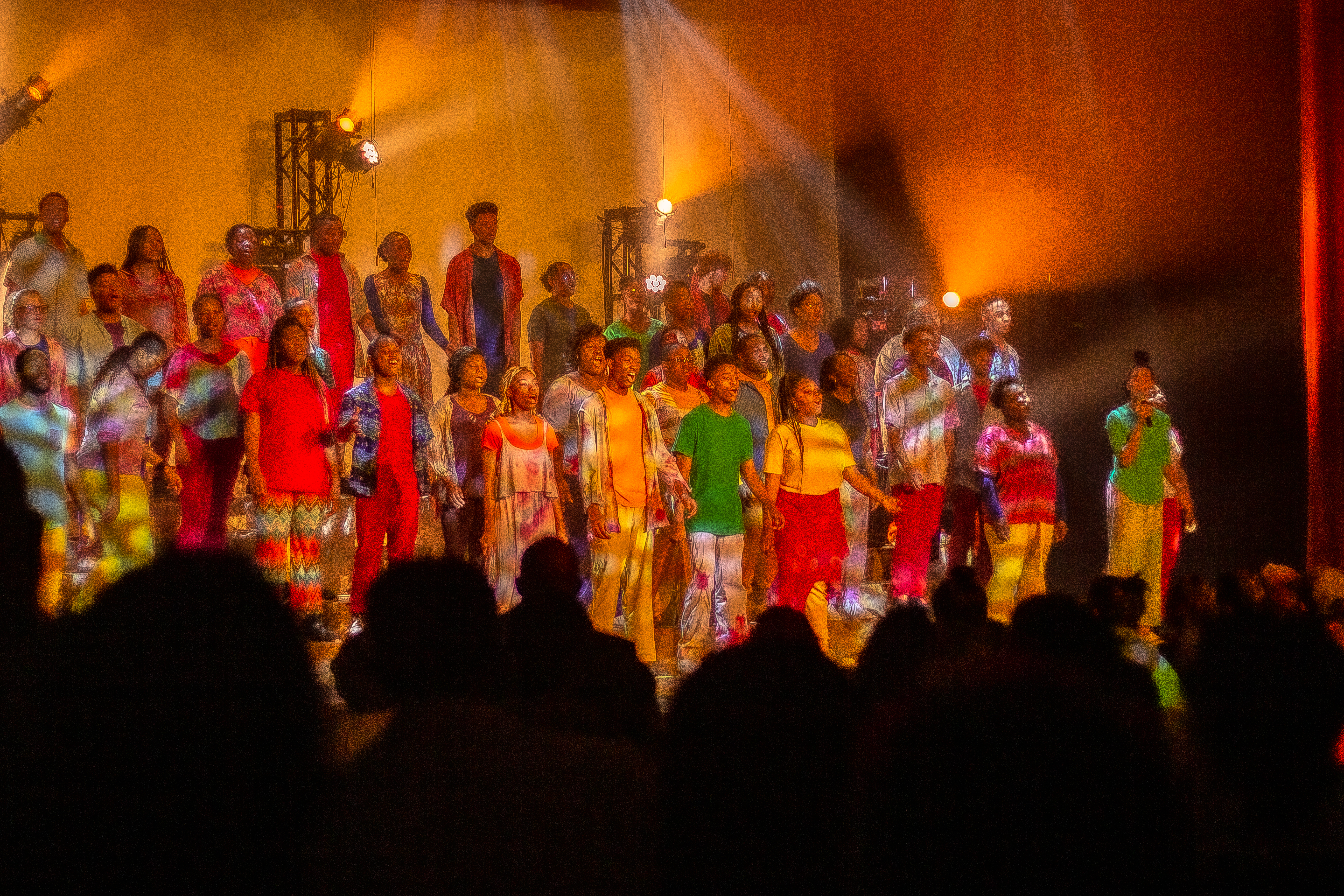
For DeLashea Strawder, Executive and Artistic Director of Mosaic Youth Theatre of Detroit, EmcArts’ idea of a Small Experiment with Radical Intent (SERI) was incredibly liberating. “As artists and creatives, a lot of what we do in our artistic process involves radical experiments, but we don’t often allow that to translate into the business aspect of our organizations,” she says. “We don’t usually associate business with fun and experimentation. In the nonprofit space your resources are so limited that you feel like everything has to be a sure thing, so the radical experiments were very freeing for us.”
For almost 30 years, Mosaic has provided training, mentoring and opportunities to young actors, singers and stage technicians in Detroit. Through a range of in-school and after-school theater and music programs—including its acclaimed Youth Ensembles—the company instills patterns of cooperation, disciplined work habits and effective problem-solving skills that serve participating youths both on stage and in life.
For Mosaic, the process of shifting programs onto virtual platforms during the pandemic has been marked by experimentation and incremental adaptation. The Youth Ensemble for high school-aged children held its first online rehearsal just two days after public gatherings of more than 50 people were banned in Michigan. The initial results were mixed, and Strawder freely admits that not all attempts to adapt to the online environment were successful.
It was immediately clear that the Youth Ensemble couldn’t maintain its usual schedule of three three-hour rehearsals per week in an online setting. Rehearsals were shortened and divided into distinct segments that focused on technique, leadership development and ensemble rehearsals. The clear separation between activities, which were previously all blended together in their meetings, works better online, and Mosaic is even considering maintaining that format once in-person programming resumes.
The more modular format of the ensemble’s work has also had another benefit: each component has become its own experiment in online collaboration and learning, so that insights gained in one area can be applied to others. “We’ve tried to fail fast in exploring the opportunities,” Strawder recounts. In addition, the balance between the modules can be adjusted, and new elements can be added or cut as needed, without negatively impacting the consistency of the program as a whole, upon which the young people and their families rely. The modular format has thereby increased the organization’s ability to adapt and has improved the resilience of the program as a whole.
The programmatic changes have also had consequences for Mosaic’s staffing. After an initial effort to reduce costs by cutting staffing levels at the outset of the pandemic, Mosaic realized they actually need a higher ratio between adult artists and young people to keep everyone engaged online. This realization, coupled with the increased availability of teaching artists and the convenience of digital access, led Mosaic to reverse course and instead grow its teaching staff.
While the individual experiments and course corrections in the delivery of Mosaic’s program have been small, they amount to a substantial transformation of the operational model that had become ingrained over the organization’s 30-year history. Not only did the creative liberation that came along with thinking of change as a series of “small experiments” lead to structural changes that will benefit the organization beyond the pandemic, but also, in the process, Mosaic has learned to become a more nimble and responsive organization.
DeLashea StrawderIn the nonprofit space your resources are so limited that you feel like everything has to be a sure thing, so the radical experiments were very freeing for us.
PLANET ANT
Wicked Questions and the Power of Paradox
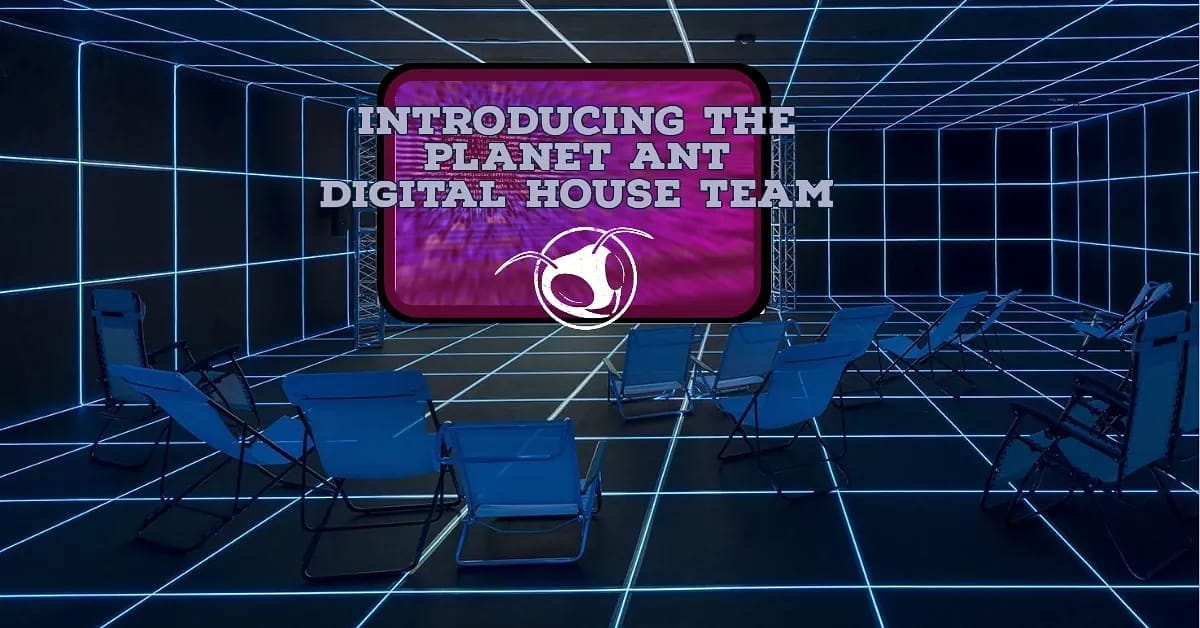
“How do we continue to grow while maintaining our intimacy?” That was the wicked question that Planet Ant, a Detroit hub for live performance and creative expression of all sorts, asked as it entered the Knight Foundation’s adaptive capacity initiative. What makes the question “wicked” is its focus on a central, irresolvable paradox. The only way to answer such a question is by reframing the problem in a way that resolves the paradox, and that can be a useful way of stimulating innovative solutions to old problems.
While Planet Ant has been in operation for 25 years, the organization has recently been on a considerable growth trajectory, with annual budgets increasing fourfold, from under $100,000 to around $400,000 over the past five years, and plans to expand even further in the future. On a normal weekend—when the world isn’t paralyzed by a pandemic—the three stages operated by Planet Ant are a hive for theater, comedy, live music, burlesque shows, live podcasts and more. Getting people on stage and fostering the creative potential of artists are central components of Planet Ant’s mission.
With three venues that haven’t been able to welcome audiences since March 2020, one might imagine Planet Ant would be particularly hard hit by the COVID-19 shutdown. However, several months into the pandemic, Executive Director Darren Shelton remained optimistic: “We aren’t afraid of being closed because we realized that the organization is more than the space. . . . We decided . . . to elevate the voice of our community, to use the infrastructure that we have to help people get their passion out there. We’re closed, but we’re still going.”
Planet Ant has always been multidisciplinary and active in experimenting with new mediums and formats. Even before the pandemic, they had experience with live podcasting and were in the process of developing a studio where community members could access audio and video equipment. Planet Ant therefore already had considerable hardware and technological know-how to produce digital content prior to the pandemic, which it has been able to provide to other local artists and organizations who are seeking to shift their programs online.
At the same time, Planet Ant used the closure of its performance venues and the influx of cash from an Economic Injury Disaster Loan to upgrade the technical capacities of its black box theater space to enable multi-camera broadcasts of live performances. In doing so, Planet Ant is supporting content creators who want to control how their work appears in the digital space and allowing them to experiment with new formats and cutting-edge technologies without having to be experts themselves. As Shelton notes, it can’t be about making a video recording of a stage play –– PBS and others are doing that, and they likely would do a better job than Planet Ant can with its limited resources. Instead, Shelton is convinced that the talent and formats for future YouTube sensations and Netflix comedy specials will be developed on Planet Ant’s stages.
Investments in new technologies and platforms are in keeping with the eclectic and experimental nature of Planet Ant’s programming. They also support bringing the creativity of Planet Ant’s featured artists to a wider audience, all the while maintaining the immediacy and intimacy of their performances. In doing so, Planet Ant has resolved the paradox at the center of its wicked question, and laid the groundwork for its future growth.
Darren SheltonWe decided to elevate the voice of our community, to use the infrastructure that we have to help people get their passion out there.
CONCLUSION
Adaptive capacity training like the kind provided through the Knight Foundation’s initiative stresses the importance of facing and proactively adjusting to changing circumstances and environments. Participants learn new approaches for responding to uncertainty so they can find a way forward rather than get stuck on the problem. These four organizations tell a collective story of experimentation that leads to adaptation despite extraordinary and unpredictable circumstances. Each organization examined the assumptions they made about how their work should be presented, how their classes should be taught or how their community should be engaged. They let go of what would no longer work in the new environment, and tried something novel with little certainty of success.
While the four organizations described here had the good fortune of participating in a program that provided them with a set of problem-solving frameworks, strategies, and tools shortly before the pandemic hit, thousands of arts organizations across the country could tell similar stories about adaptations to their program delivery, operations or organizational structures driven by COVID-19. These inherent strengths of creativity and resourcefulness must be celebrated as they will facilitate the resilience the sector will continue to draw on to navigate the uncertainties that inevitably lie ahead.
